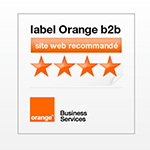
Another day, another buzzword… Integration is quite a hot topic on these days of predictions, especially after both David Armano, from Edelman Digital, and Jeremiah Owyang, from Altimer, qualified 2011 as year of social (‘media’ for David, ‘business’ for Jeremiah) integration.
Integrating social into business
As many words, ‘integration’ has quite a few meanings, but they all rely to the fact of ‘getting the part to fit into the whole’. From a business perspective, the matter of integrating ‘social’ into every aspect of companies’ operations is of course a trend we will all see happening one day or another, but I cannot keep from being dubitative about the length of the road 99.9 percent of businesses will have to follow to transform themselves from their present state to truly social businesses. Integration requires parts to exist before they can fit into the whole.
More and more initiatives exist which prove the competitive advantages associated to becoming a social enterprise, and the exponential growth of the social web, where most of customers’ conversations now take place, is now an unavoidable business fact, but the vast majority of organizations still do not get it at all. These are still mainly emergent behaviors. Seriously, heralding 2011 as being the year of social integration amounts to claiming it the year of time travel.
Integrating social into platforms
Integration is also a technology matter. In this context, ‘integrating’ can be helpfully defined as ‘dealing with’. The iPod ‘deals with sound’ so that, when associated to iTunes, it integrates most of the ways we daily interact with sound. The result is a sleek, one-size-fits-all device able to generate the best ever user experience while hiding all internal complexity. Similarly, Microsoft Excel ‘deals with numbers’ with the single elegant paradigm of a grid.
We all dream of integrated beauties such as Star Trek’s Tricorder, but ‘dealing with’ doesn’t always stands for a great user experience. Another Microsoft product, Word, for long, is a synonym for big bloated piece of software, with many features one doesn’t even want to hear about. In fact, Word ‘deals with words’ in the same way the iPod ‘deals with sound’, which shows that integration is far from being straightforward when it comes to deal with complex concepts. There are so many radically different ways we use words in written documents that no software can seamlessly integrate them.
When it comes to ‘dealing with social’, large platforms tend to look much more like Word than with the iPod or Excel. Huge sets of collaborative tools clearly do not facilitate collaboration: not even do they facilitate the comprehension of what ‘social’ means. Time will tell if vendors will succeed in developing a new paradigm for collaborative interfaces, but, in that sense, actual toolsets clearly demonstrate a failure in what we can expect from integration.
Nevertheless, we are seeing today technological integration happening much faster www.moneygrampoint.fr than business integration… for better or for worse.
Integrating social into CRM?
Considering the growing importance of the social web, it is not surprising that companies are looking for ways to monitor customers’ activity and interaction beyond engagement in communities. ‘Dealing with [social] customers’ is Social CRM’s ambitious promise. As you have guessed, integration is here too a key concern (or should be); but should we look after integration in this domain?
If I had one prediction to make for 2011, it would be the rise of analytics tools. Dealing with customers means a lot of data mining and analysis, and most tools are either quite awfully imprecise, like sentiment analysis, or require deep knowledge and heavy hand-tuning, like social network analysis. Add to that the difficulty of tapping into real-time modifications of your customers’ interactions, and you will understand why we need much stronger analytics tools than those available today.
Furthermore, a global understanding of what your customers are talking about is a lame objective. What customers want is a personal experience, at every single point where they choose to interact –or not- with your company. Traditional CRMs are about personalized relationships, and Social CRMs must follow this track, and aim at offering a comprehensive view of individual customers’ interactions.
Unless being able to deliver on such a demanding promise, social CRM integration, from a toolset perspective, is quite nonsense. Whether you start from a collaborative or a CRM platform, present offering will leave you with a gathering of imperfect tools for a less than perfect result.
On the other hand, companies’ needs –and will- to better understand social customers’ behaviors grows rapidly, whether it be to progress toward a more social business, or, more often and prosaically, to ‘traditionally’ increase profit through social channels. While integrating social into business is still far away, interacting with social customers is a reality most departments are facing today, to reach different goals, following different processes, using different tools. To understand how social business can drive better business, companies need to be able to reach them, they need to feel the way customers now want to get their jobs done better with the help of the goods and services they buy. Social CRM has this power, and, as fuzzy a concept it still is, its integration into business has the potential to change the way most business is done.






Thanks Thierry, nice one
Integration is a key topic squandered in the last decade by script kiddies who yelled XML, and it will be equally abused by S-vendors to sell you their social integration tools
All rubbish. Like you say, you can only integrate what’s there, and currently there’s hardly any enterprise that has anything to integrate into, unless it’s a SAP or Oracle monolith
We really don’t need social integration into our existing applications or systems. We did do that with the fax, and email, but only to store them easily. We didn’t do that to the phone, we still use people to pick that up and speak to the other people at the other end of the line
A big screen with Twitter Search on it, showing the keywords you’re looking for? Hey, good idea! But only so people can look at it and decide who (employer) takes who (customer) next
Like I say in my last post, http://www.martijnlinssen.com/2010/12/2010-2020-great-divide.html, SCRM will fail to make it into the enterprise. We do need Integration, but that is proper integration linking everything to everything so we get a real POA – after all it is processes that drive an enterprise
As much as I agree with the critique expressed in this comment I cannot relate to the concept of processes driving the enterprise except that I miss the catch here. Perhaps this is seen from a system-centered view but I do maintain that the enterprise is driven by people, relationships and goals.
I agree with you Michael. Martijn, what I think we need isn’t linking everything to everything, but everything to anybody, a much more difficult task, where information is put in context with the one who has / shares it.
Processes are not really suited to drive such adaptive environments, and aren’t even effective tools when outcome is unclear, which is already the case in many organizations (about “the Power of Pull”, John Hagel said that more than 70 percent of workforces are employed to handle exceptions) and would get worse when any business object (an information, a task, some customer’s action, etc.) is meaningfully linked to people.
I thought it’d be blatantly obvious that I’m talking about tech integration but apparently it wasn’t
People, relationships and goals do nothing for your enterprise: business does it all. Business drives customers to your company, and business is neatly divided in processes (and process steps)
Information goes from one process to another, resulting in information flows. Social brings in an existing information flow that hence has remained outside the company, and never been monetised
People, applications / systems and tools support all of the above. But systems only do so if those processes can be automated: there are more business rules than exceptions so it ROI’s to invest in automating them
We still need to link people to people by providing the right information flows from the right senders to the right recipients. Where that can be efficiently supported by tools, please do so. Where there are relatively more business exceptions to such a process (because, whether you like it or not, we’re talking about just another process here) than there are business rules, it will be people without much machines doing that – that’s life
I’ve read Hagel many times, and I love his work (http://www.martijnlinssen.com/2010/07/generations-social-and-enterprise-adopt.html). The very reason that John names the 70% is the very fact that the rules are automated, so the exceptions are left to the workforce – but it’s comparing apples to oranges this way.
I do agree with John, but business has to ROI. No one will triple the workforce and happily handle exceptions if there isn’t a business case for that – and we will find a way to funnel the exceptions into some kind of rule, just like we call all people in France French as if they’re all the same 😉
Business hasn’t changed over the last gazillion years: people provide services to other people via predefined processes. Social doesn’t change this.
What social does change, is putting back the humans in it all. I somewhat Agree with Jon, but like to say 25 years, in stead of 10
The only real question is: will it be cheaper to do social business in stead of scaring the customer away from the competition? Of course the innovators get away with it now, but how will the early majority fare? Needless to say, I desperately hope they’ll do alright
Good luck by separating business from people and having no goals at all because it won’t work. Business has existed long before the notion of “process” being applied to human activity: http://isistimes.wordpress.com/2010/03/30/background-of-adaptive-case-management/. Yet if you want the ingredients of business mingled in an anonymous hotchpotch that is ten neatly sliced in step-by-step procedures it still demonstrates a certain goal to have everything tightly under control.
Thierry,
Highly agree with this. The “promise” of ever more flurry through the social cannot be offset by a vague chance of having more powerful tools to run however fancy and elaborate algorithms on it. One idea behind it may be that if you can’t build a relationship with your customers at least control what they say but this is perhaps not quite the engagement they are looking for no matter which technology is actually used.
Best,
Michael
I am appreciating this thoughtful (and pragmatic) conversation.
Re-designing work to fully and effectively combine existing business processes, exception handling and the growing range of ‘social’ collaboration platforms / tools is not (IMHO) going to be nearly as easy or clear-cut as many seem to think. And, I think it will take quite some time (a decade or more) before there’s any really significant progress on a widespread scale .. in other words, getting to the other side of the bridge over a real paradigm shift.
But I’m probably wrong about the time frame involved. I’ve often been wrong before 😉
Sadly, I think you are right, Jon…
Resistance to change, along with the ‘sticky’ mindset induced by long time privileges associated with existing structures (aka distribution of power along hierarchies) will make re-designing work a long crusade.
But this is such a shift that I begin to think that we should focus on something else than rational change management, we have to walk to walk and embrace existing paradoxes; at the end of XVIIth century, when Luddites began destroying looms, they weren’t protesting against mechanization of work and the division of labour heralded by Adam Smith, but because they thought they would loose their jobs. No matter how legitimate (or not) their cause was, they fought for the wrong reasons. There might be here a lesson for us to learn…